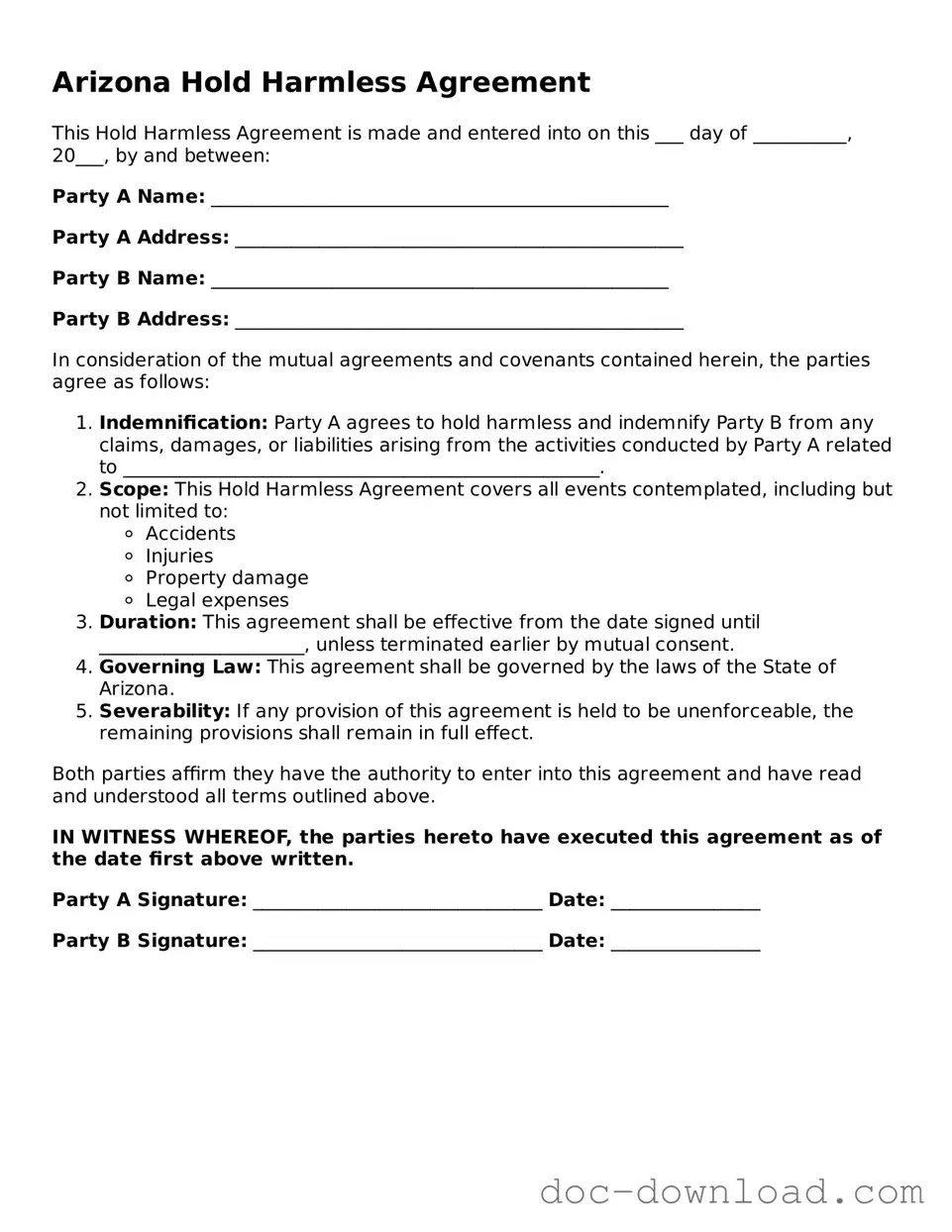The Indemnity Agreement is similar to the Hold Harmless Agreement in that both documents aim to protect one party from liability. An Indemnity Agreement typically involves one party agreeing to compensate another for any losses or damages that may arise from a specific situation. This is often used in business transactions, where one party may assume risks associated with the actions of another. The key difference lies in the language and focus; while a Hold Harmless Agreement emphasizes protecting against claims, an Indemnity Agreement often includes compensation for losses incurred.
The Liability Waiver is another document that shares similarities with the Hold Harmless Agreement. A Liability Waiver is often used in recreational activities or events, where participants agree to relinquish their right to sue for injuries sustained during the activity. Like the Hold Harmless Agreement, it is designed to protect one party from legal claims. However, a Liability Waiver specifically addresses the participant's assumption of risk, while the Hold Harmless Agreement may cover a broader range of liabilities.
The Release of Liability form also parallels the Hold Harmless Agreement. This document allows one party to release another from any future claims or legal actions. It is commonly used in situations where individuals participate in potentially hazardous activities. Both documents serve to limit legal exposure, but a Release of Liability often requires the signing party to acknowledge the risks involved more explicitly, whereas the Hold Harmless Agreement may not require such detailed acknowledgment.
The Service Agreement can be compared to the Hold Harmless Agreement in the context of risk management. In a Service Agreement, one party provides services to another, and the terms often include clauses that limit liability for issues that may arise from the service. While the Hold Harmless Agreement focuses specifically on indemnifying against claims, a Service Agreement encompasses a broader scope of responsibilities and expectations between the parties.
The Rental Agreement is another document that shares characteristics with the Hold Harmless Agreement. When renting property, landlords often include clauses that protect them from liability for injuries that occur on the premises. This is similar to the Hold Harmless Agreement, which aims to shield one party from claims arising from specific actions or conditions. However, a Rental Agreement typically covers a wider array of responsibilities, including payment terms and property maintenance.
When engaging in the buying or selling of a motorcycle, it is essential to have the necessary documentation in place to protect both parties involved. This is where the Motorcycle Bill of Sale form comes into play, serving as a vital record of the transaction that confirms the sale and supports the transfer of ownership.
The Construction Contract often includes provisions similar to those found in a Hold Harmless Agreement. In construction projects, contractors may agree to hold the property owner harmless for any injuries or damages that occur on-site. This agreement serves to allocate risk and protect the property owner from potential claims. While both documents serve the purpose of liability protection, a Construction Contract typically includes detailed terms regarding the scope of work and responsibilities of the parties involved.
The Partnership Agreement may also contain elements akin to the Hold Harmless Agreement. In a business partnership, partners often agree to indemnify each other for certain actions taken on behalf of the partnership. This mutual protection can resemble the Hold Harmless Agreement's intent to shield one party from liability. However, a Partnership Agreement encompasses a broader range of issues, including profit-sharing, decision-making, and the dissolution of the partnership.
The Non-Disclosure Agreement (NDA) can be compared to the Hold Harmless Agreement in terms of protecting parties from potential liabilities. While an NDA primarily focuses on safeguarding confidential information, it may also include clauses that hold one party harmless from claims arising from breaches of confidentiality. Both documents serve to protect interests, but the NDA is more focused on information security rather than physical or financial liabilities.
Finally, the Employment Agreement can bear similarities to the Hold Harmless Agreement, particularly in the context of employee liability. Employers may include clauses that protect them from legal claims arising from an employee's actions while performing their job duties. This is similar to the Hold Harmless Agreement, which aims to limit liability. However, an Employment Agreement typically addresses a wider range of employment terms, including salary, benefits, and job responsibilities.
